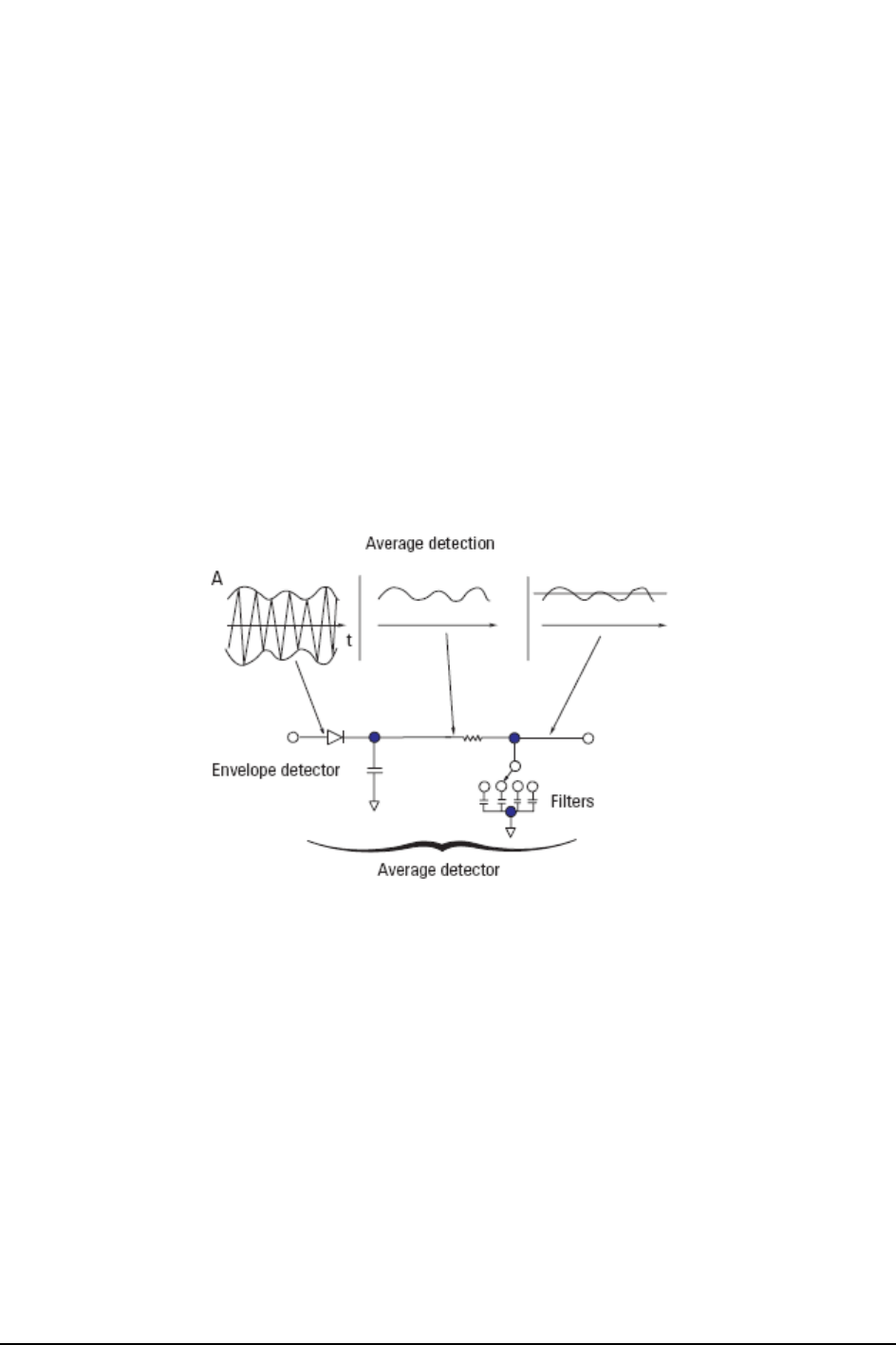Technical data
Table Of Contents
- EMC Measurement Application Measurement Guide
- Table of Contents
- 1 EMC Measurements
- 2 Conducted Emissions Measurements
- 3 Radiated Emissions Measurements
- A: Line Impedance Stabilization Networks (LISN)
- B: Antenna Factors
- C: Basic Electrical Relationships
- D: Detectors Used in EMI Measurements
- Glossary of Acronyms and Definitions

38
Detectors Used in EMI Measurements
Average Detector
Average Detector
The average detector is required for some conducted emissions tests in conjunction
with using the quasi-peak detector. Also, radiated emissions measurements above 1
GHz are performed using average detection. The average detector output is always
less than or equal to peak detection.
Average detector operation
Average detection is similar in many respects to peak detection. The following graphic
shows a signal that has just passed through the IF and is about to be detected. The
output of the envelope detector is the modulation envelope. Peak detection occurs
when the post detection bandwidth is wider than the resolution bandwidth. For
average detection to take place, the peak detected signal must pass through a filter
whose bandwidth is much less than the resolution bandwidth. The filter averages the
higher frequency components, such as noise at the output of the envelope detector.










